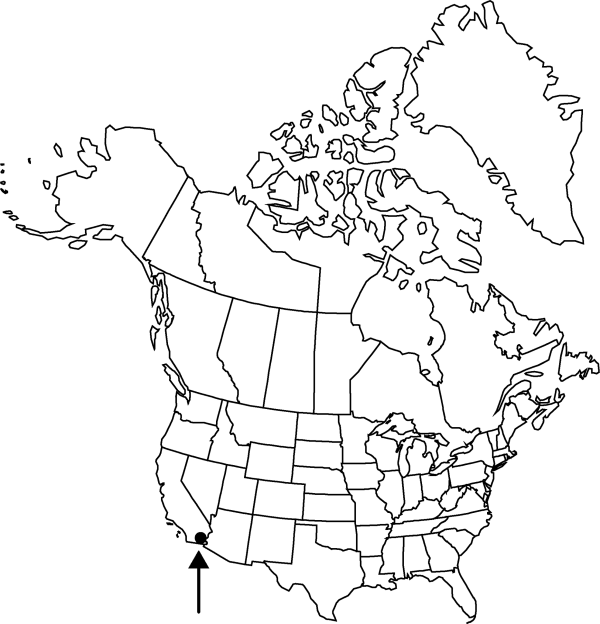Cylindropuntia munzii
Kakteenlexikon, 113. 1966.
Trees or treelike shrubs, with trunk(s) and main branches spreading, bearing terminal tufts of usually drooping branchlets, 2–4 m. Stem segments easily detached, gray-green, 4–16 × 1.2–2.5 cm; tubercles prominent, narrowly oval, 1–2 cm; areoles subcircular to obdeltate, 5–7 × 3–4.5 mm; wool tawny to yellow-brown, aging gray. Spines (7–)9–14 per areole, at most areoles, erect or spreading, yellow, aging red- to gray-black with pale tips, terete or abaxial ones slightly flattened, the longest to 3 cm; marginal bristlelike spines shorter, 0–4; sheaths pale yellow becoming golden apically, baggy. Glochids in adaxial crescent and sometimes small tuft, yellow, inconspicuous, 0.5–2 mm. Flowers: inner tepals pale reddish maroon-brown, elliptic, of irregular lengths, 8–15 mm, emarginate-apiculate; filaments green; anthers yellow; style and stigma lobes cream. Fruits easily detached, tan when mature and fertile, globose, 17–24 × 17–21 mm, dry, tuberculate, spineless but bearing numerous very long glochids; basal tubercles not markedly longer than distal ones (except in sterile fruits); areoles 30–40. Seeds pale yellow, rounded-deltoid, slightly flattened, 3–4.5 × 3–4 mm, sides smooth; girdle smooth, not protruding. 2n = 22, 33.
Phenology: Flowering spring (Mar–May).
Habitat: Sonoran Desert, flats, hills, sandy to rocky soils
Elevation: 400-700 m
Distribution

Calif., Mexico (Baja California).
Discussion
Cylindropuntia munzii hybridizes with C. echinocarpa forming a shrub to 1.5 m, with shorter tubercles and baggy-sheathed spines obscuring the stem and bearing fruits with long glochids but no spines. The chromosome number for the hybrid is 2n = 22.
Selected References
None.